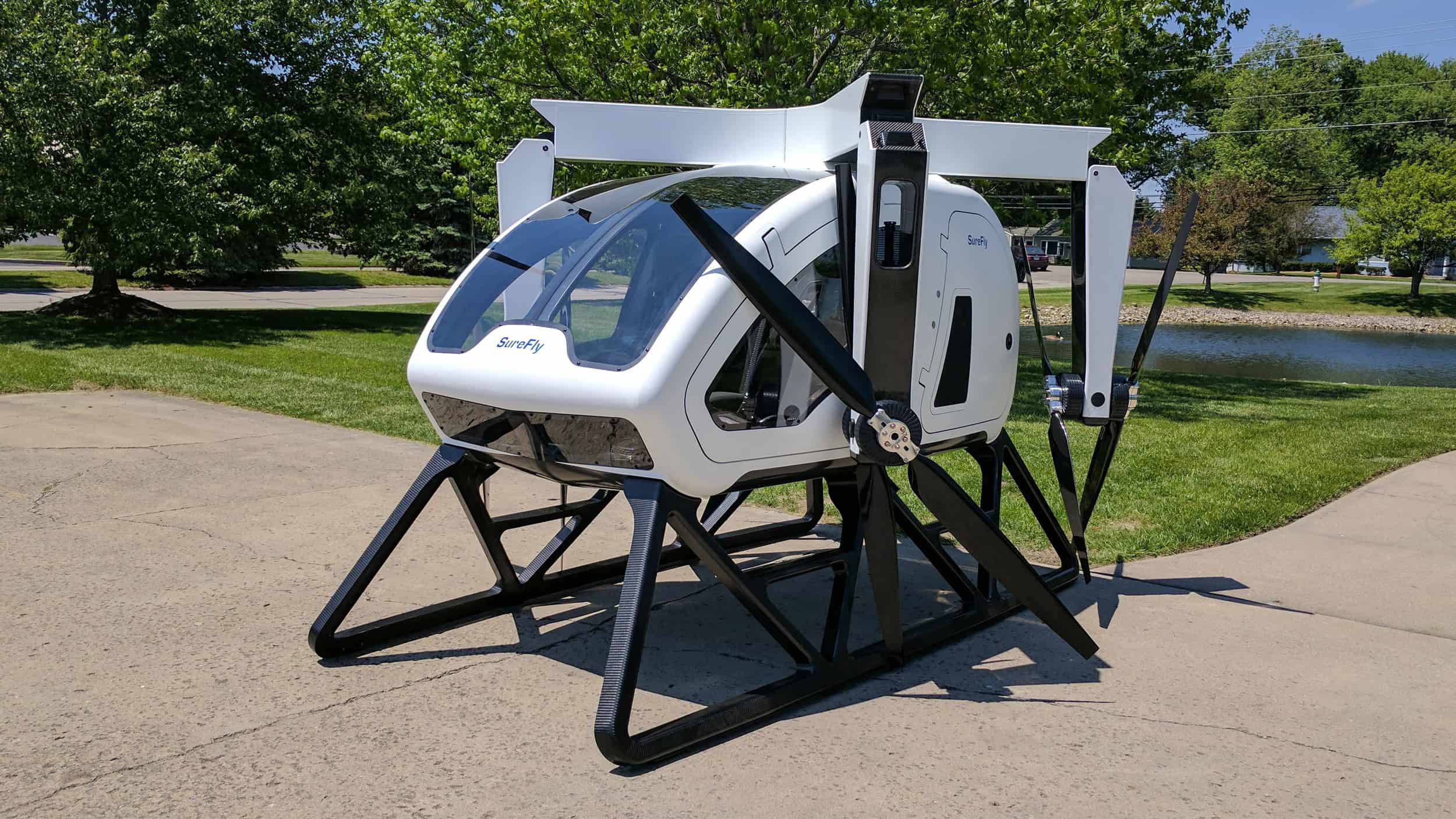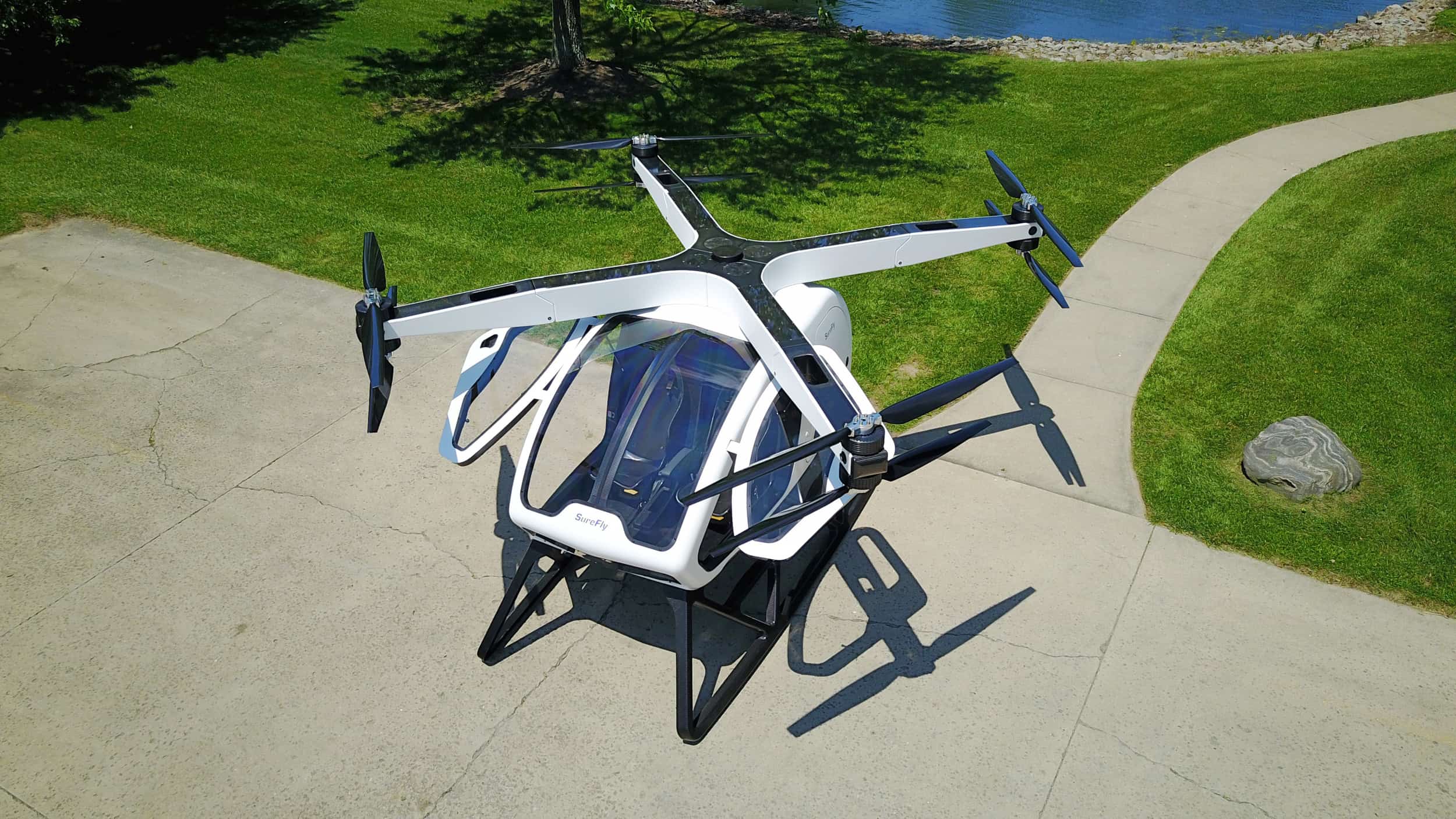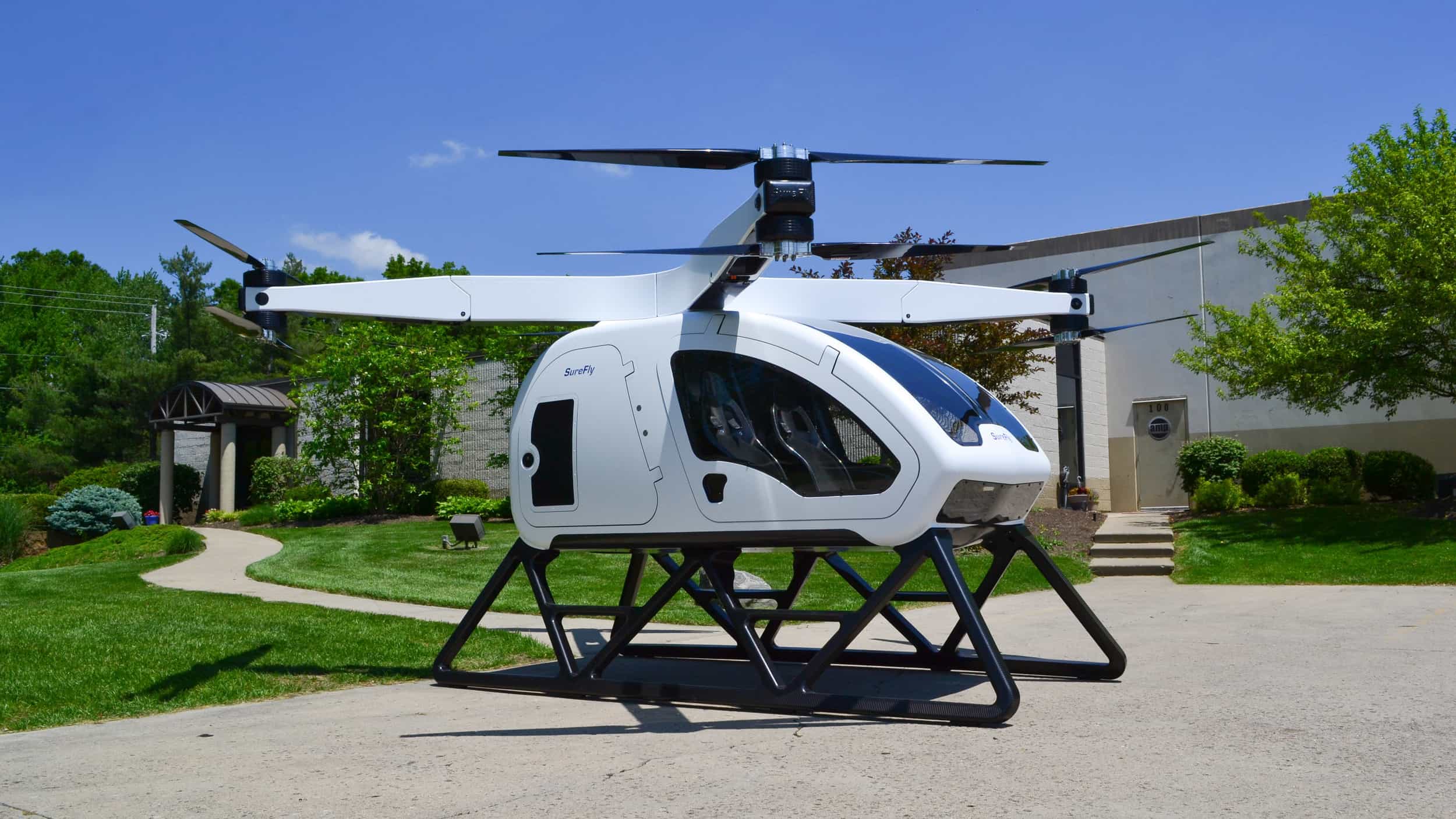Workhorse, the company behind the conceptual W-15 PHEV battery-powered pickup truck, revealed the SureFly at this year’s Paris Air Show.
When you first see it, the SureFly looks like a large-scale drone, with four arms and eight rotors that resembles a quadcopter, as oppose to the traditional single-rotor helicopters that are common today. The end of each arm features two rotors. The SureFly uses a petrol engine to power the eight electric motors, one for each of the rotors.
There are also two 7.5 kWh lithium-ion battery packs that are used as a backup in case the gas motor fails. In case of an emergency, they’re good for about five minutes of power, enough time to get you safely to the ground. If that fails, too, there is a parachute mounted in the center. This works because the rotors are at the corners, not the center.
Curb weight for the two-seat vehicle is 1,100 pounds. The maximum takeoff weight is 1,500 pounds. Leaving actual carry capacity at 400 lbs. Total range is about 70 miles, or about one hour of flight time. Since the SureFly is powered by a gasoline engine, topping off the tank provides another 70 miles of range. There’s no waiting to recharge a battery pack. The flight ceiling is 4,000 feet.
The fuselage and props are made from carbon fiber, which is partially exposed in places like the interior. One convenient feature is the foldable propeller arms, which allows the SureFly to be stored in a standard sized garage. While not quite a flying car, the fact that it can be landed and stored at home is another step in the right direction.
There is a single joystick to control SureFly’s forward, sideways, and yaw movements. Buttons handle altitude while the speed is automatically controlled by the computer. Since it requires a human hand at the controls, the operator still needs a pilot’s license. That said, because it’s classified as a light-sport craft, there’s only 20 hours of training required. A traditional helicopter license requires an additional 1,500 hours of training.
Want one in your garage? You can expect to pay around $200,000.




